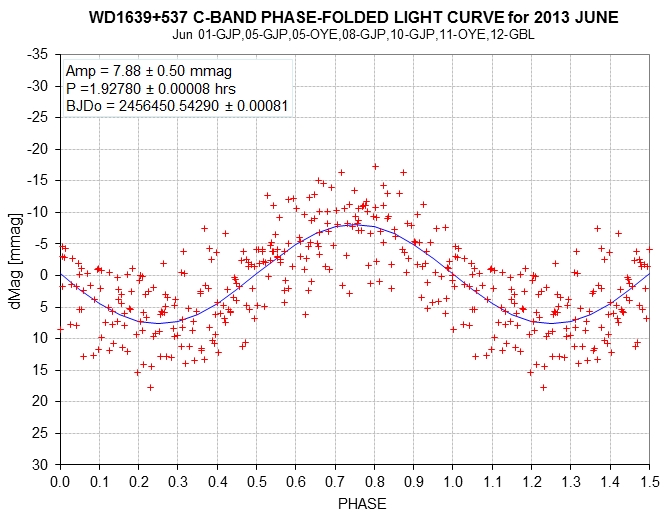
Phase fold solution for 7 useable LCs.
This WD is a variable with an amplitude and period that could be explained by a starspot, and probably not an exoplanet. It was discovered to be variable by the PAWM2 group observing project, and noticed as a variable by Joe Garlitz (on June 1). This web page is devoted to light curves of the WD and will serve as a baseline for a later search for changes in either amplitude or phase (which can only occur for the star sot explanation). [Return to PAWM2 web page]
Update: 2013 Aug 14, Pierre Bergeron (WD expert in Canada) reviewed this web page and wrote "Interesting... This is a magnetic DA white dwarf, therefore it probably has a hydrogen-rich atmosphere rather than a helium-rich composition. Because of the dipole field, it probably has a magnetic spot." He said he'd keep it in mind for others who might be interested in this object's variability.
Basic Data
WD1639+537 (also referred to as GD 356) is currently located at
16:40:56.96 +53:41:06.7 (J2000). It has V-mag = 15.045 and B-V =
0.236 (according to APASS). It has a proper motion of 0.237
"arc/year (to the southwest). The spectral energy distribution
(SED) shows it to be a cool white dwarf without evidence for an
accretion disk. It has a published temperature of 7510 K (). Its
spectrum shows a composition of mostly helium, but hydrogen
emission lines are present(). The spectral type is given as
DAE. Spectroscopic line variations imply a rotation period
of 0.0803 days (1.927 hours). It has a magnetic field of 13
mega-gauss (). The mass has been estimated to be 0.67(0.07) solar
masses.
Overall Plan
The plan is to establish an accurate phase-folded LC for 2013
June for comparison with a similar analysis using data from the
2014 observing season. If the variation is caused by a starspot
there will likely be a change in the amplitude and/or phase. Until
I learned that it exhibited spectrum changes with a period
essentially the same as that for brightness variations (1.93 vs.
1.927 hrs) I had planned on follow-up observations for the purpose
of assessing the idea that an exoplanet was reflecting WD
starlight to cause the brightness variations. Because the
exoplanet hypothesis is unlikely this target has been abandoned by
PAWM2.
Phase Fold Solution

Phase fold solution for 7 useable LCs.
SED
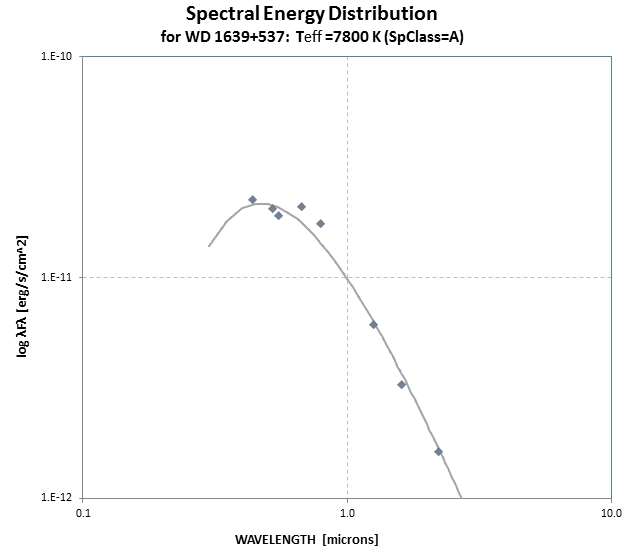
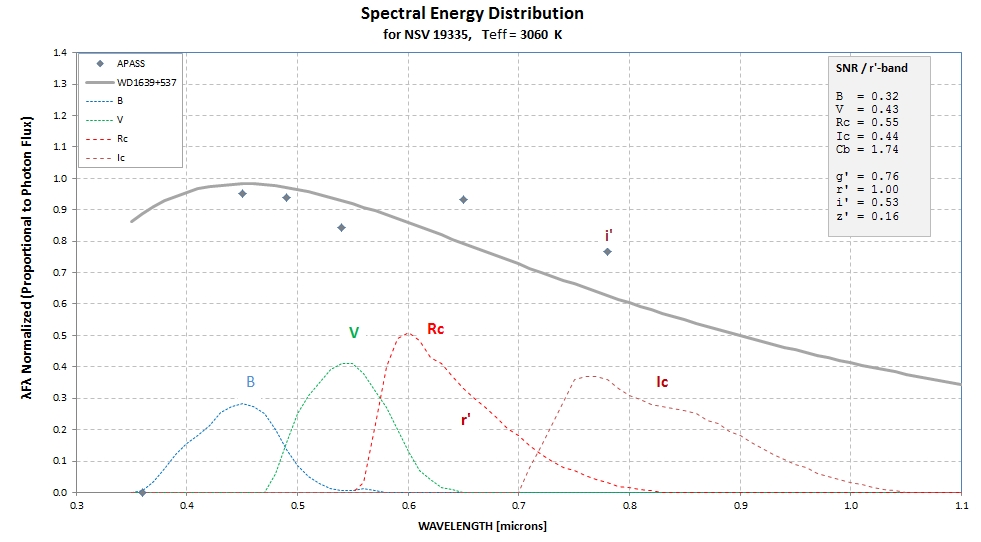
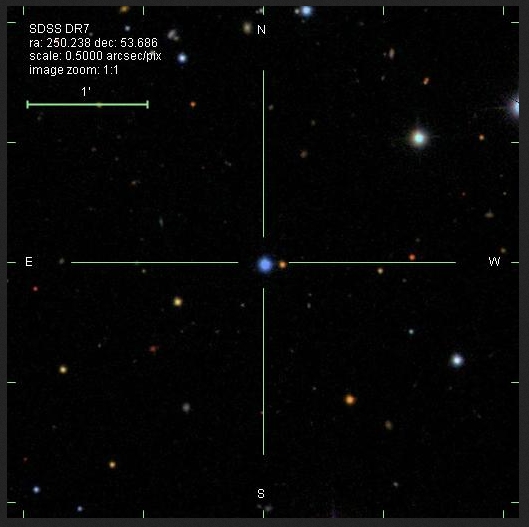
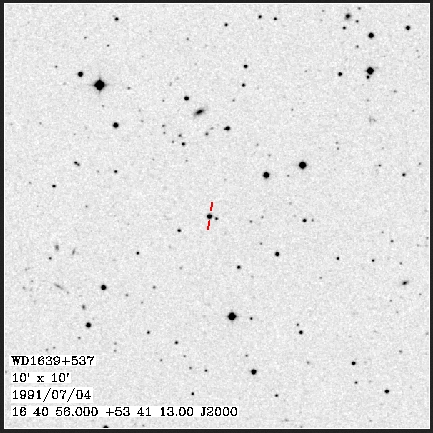
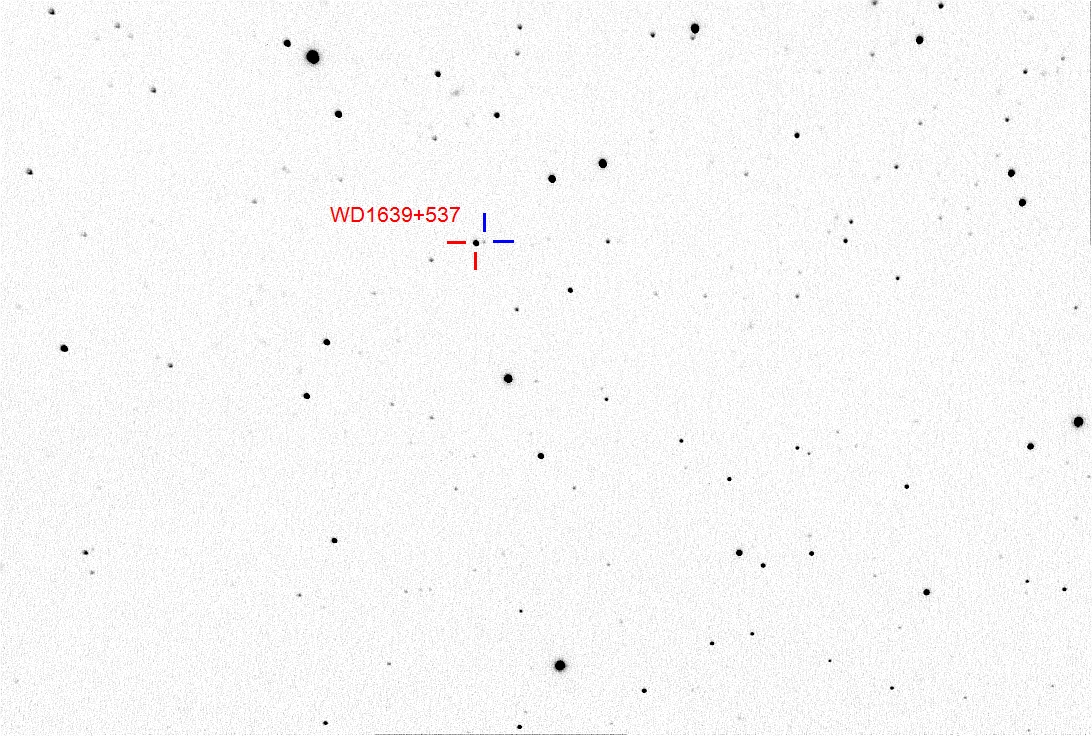
____________________________________________________________________
WebMaster: B. Gary. Nothing on this web page is copyrighted. This
site opened: June 8, 2013